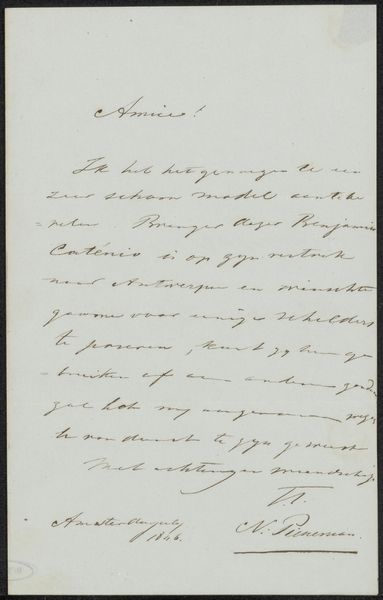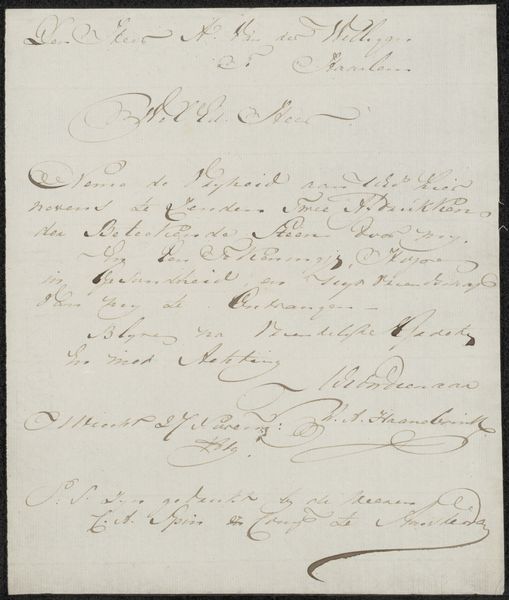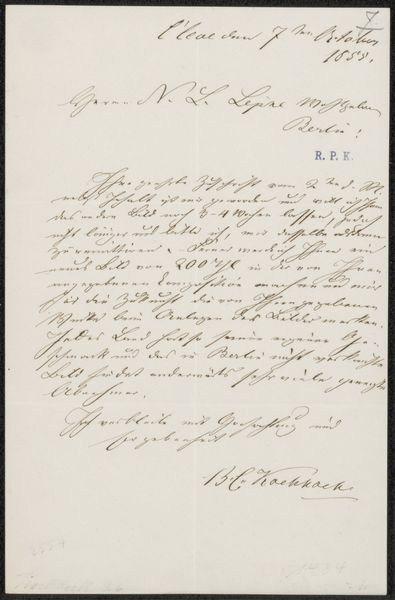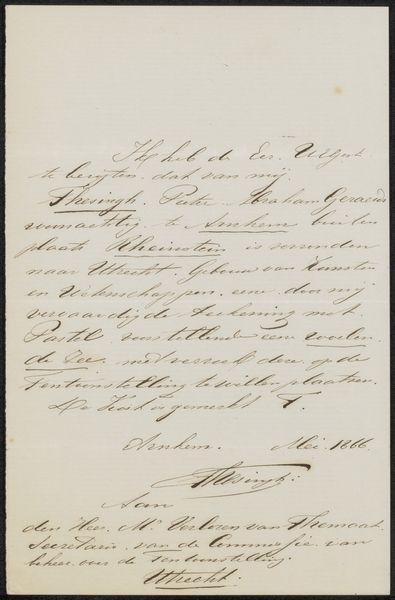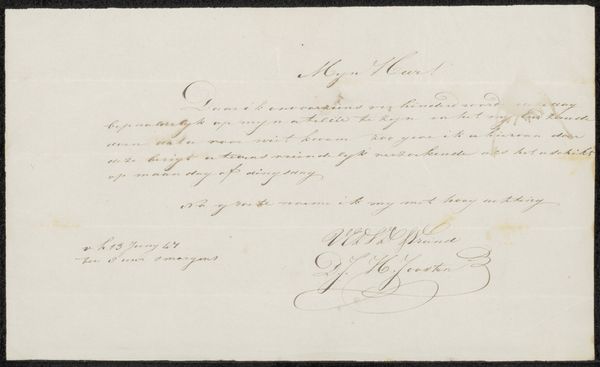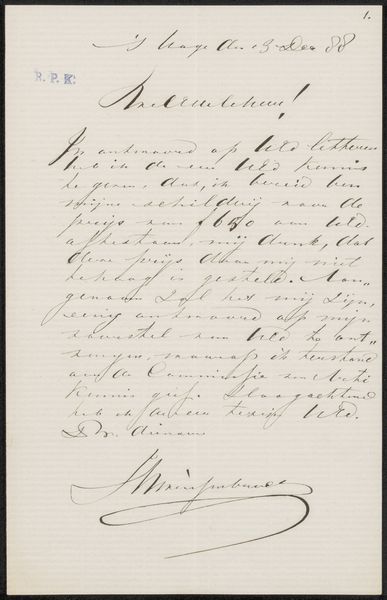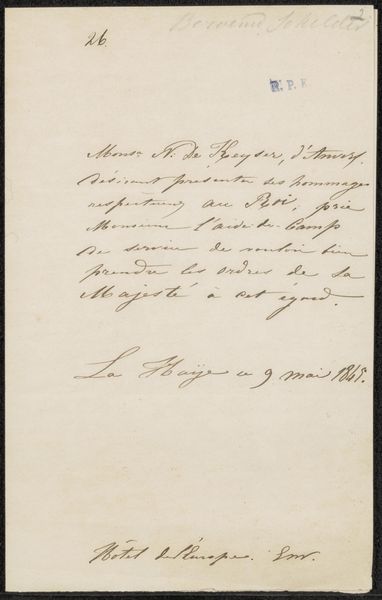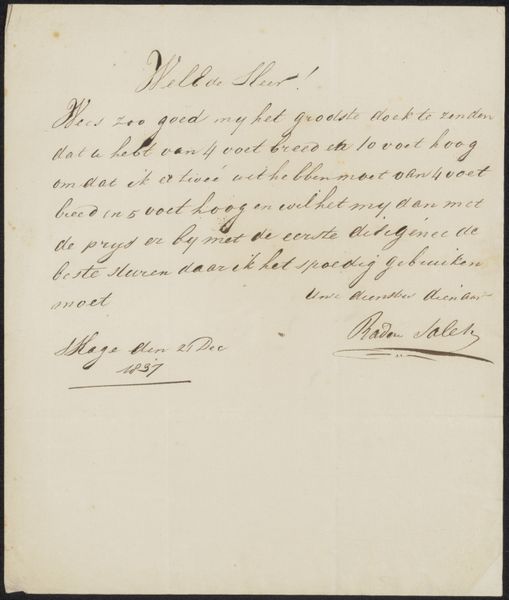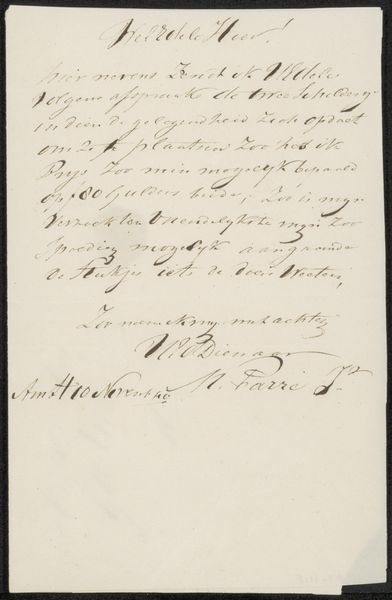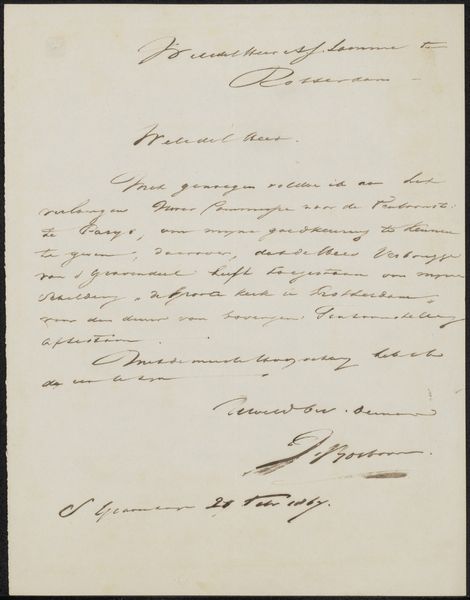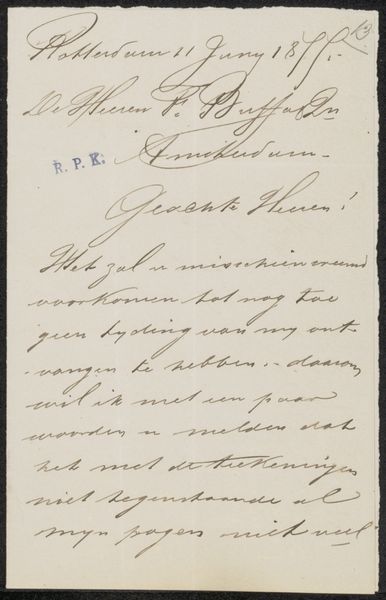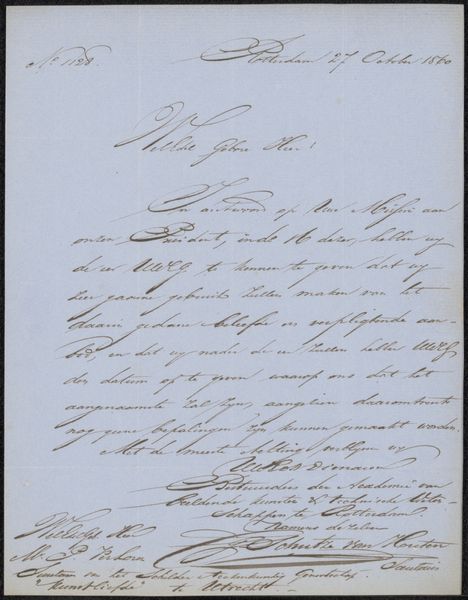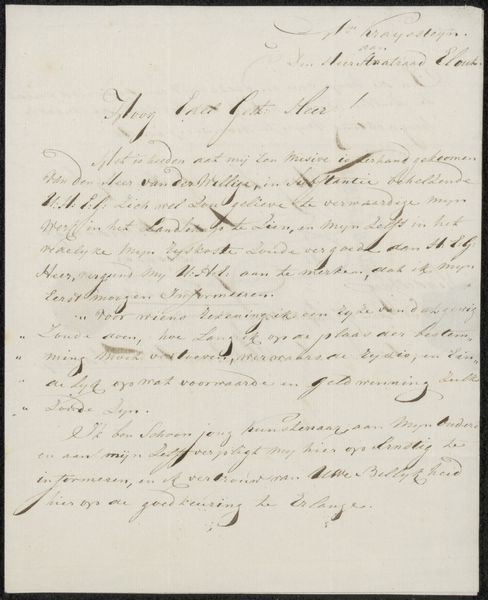
drawing, paper, ink
#
drawing
#
ink drawing
#
ink painting
#
paper
#
ink
#
calligraphy
Copyright: Rijks Museum: Open Domain
Curator: This delicate work before us is "Brief aan Frans Buffa en Zonen," which translates to "Letter to Frans Buffa and Sons." Created by Everhardus Johannes Potgieter around 1850 or 1851, it is rendered in ink on paper. Editor: Immediately, I’m struck by how personal it feels, like eavesdropping on a private moment. The script is so elegant, almost musical. There's something melancholy about it, maybe just the sepia tones and the slight fading. Curator: Absolutely. Potgieter was quite a literary figure, and this piece is a tangible piece of history, connecting us to the 19th-century Dutch art world. The Buffa family were prominent art dealers. Editor: It is also such an evocative texture. The way the ink bleeds slightly into the paper, you can almost feel the artist's hand pressing down, sharing the immediacy of thought captured for the ages. Did Potgieter write a lot of letters or manuscripts? Curator: He certainly did. Potgieter was known as being very communicative with his contemporary artists, with most of the discussions focusing around nationalism and romanticism. Editor: This artwork reflects Potgieter's creative style. It feels both carefully planned and spontaneously expressive. But its reliance on social and institutional connections is essential too. It only lives, aesthetically and politically, as art if its creator is recognized as an artist by the broader, historical institutions of art. Does that limit our view of this type of artwork today? Curator: An intriguing question. While institutions undoubtedly play a role, I believe there's an intrinsic beauty in the artistry of handwriting and communication, regardless of whether one is considering these issues. The flourishing signature becomes art itself. And the purpose of such pieces goes beyond just social maneuvering. This might seem farfetched but maybe he just wanted a way to relate with others who shared common artistic ground with him. Editor: Perhaps! For me, what remains most captivating is the raw sense of a real connection. So much about engaging with visual material involves our digital and social connection today, so something tactile like a letter makes us ask, 'Can words alone be works of art?' Curator: It offers an undeniable charm, doesn't it? Editor: I can agree. It reminds us that history, art, and communication can exist as things we can reach out to.
Comments
No comments
Be the first to comment and join the conversation on the ultimate creative platform.

